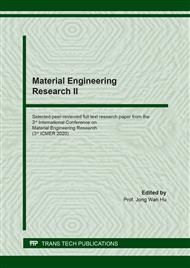p.13
p.19
p.25
p.33
p.39
p.47
p.53
p.59
p.65
Study on Effect of Different Compaction Methods of Aeolian Sand in Taklimakan Desert by Content of Powder Clay
Abstract:
The wind-blown sand in Taklimakan Desert was mixed with powder and clay particles to carry out heavy compaction and surface vibration compaction tests. The results show that the surface vibration compaction effect of aeolian sand is better when the water content is extremely low or saturated, but the effect is worse when the water content is about 2% ~ 4%, but it is still better than heavy compaction. With the increase of silt content, the surface vibration compaction effect decreases little in a wide range, but at and near the boundary where the dry compaction effect changes from obvious to inconspicuous, the surface vibration compaction effect decreases rapidly, which is soon lower than that of heavy compaction. In addition, with the increase of silt content, the reduction degree of surface vibration compaction effect is also affected by water content: the reduction is smaller when the water content is extremely low, followed by the reduction when saturated or optimal water content, and the reduction is the largest when the water content is about 2% ~ 4%. The research results are beneficial to the popularization and application of surface vibration compaction, especially in the dry compaction technology of aeolian sand subgrade.
Info:
Periodical:
Pages:
39-45
Citation:
Online since:
January 2021
Authors:
Price:
Сopyright:
© 2021 Trans Tech Publications Ltd. All Rights Reserved
Share:
Citation:


